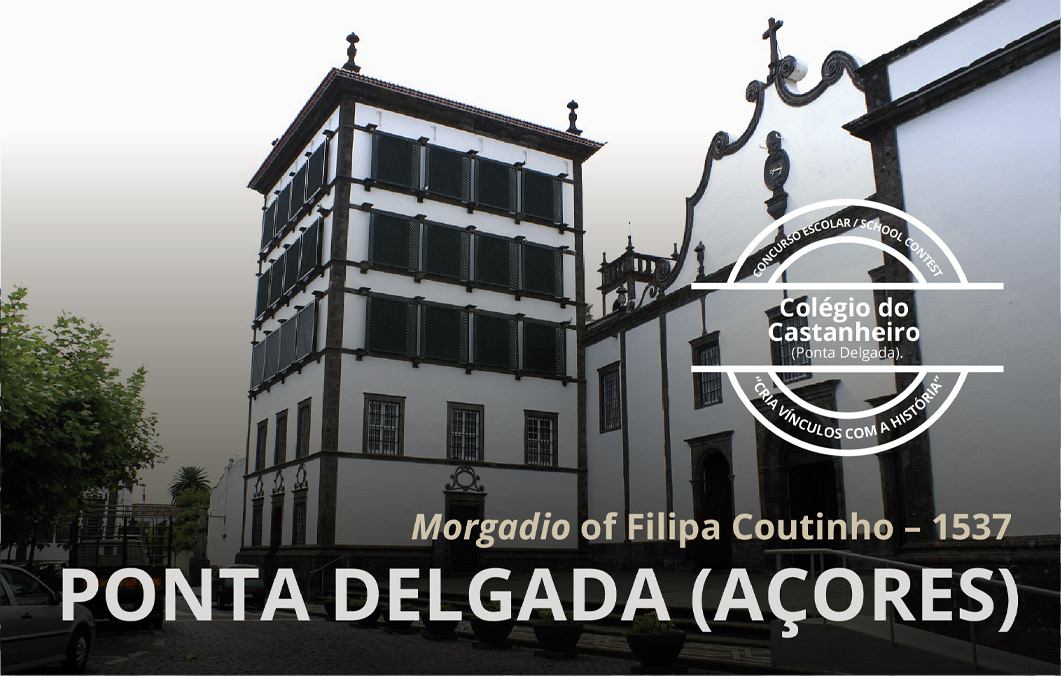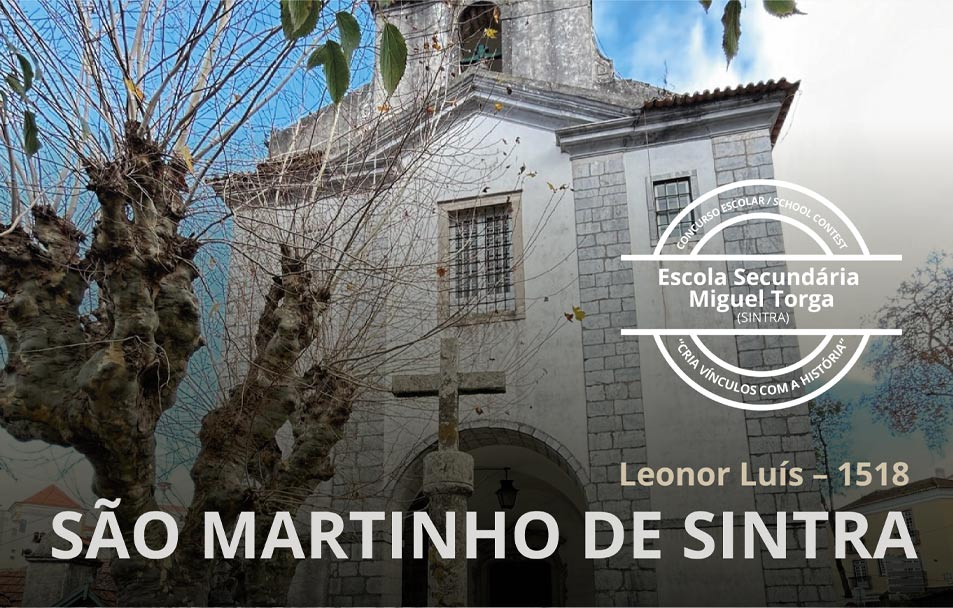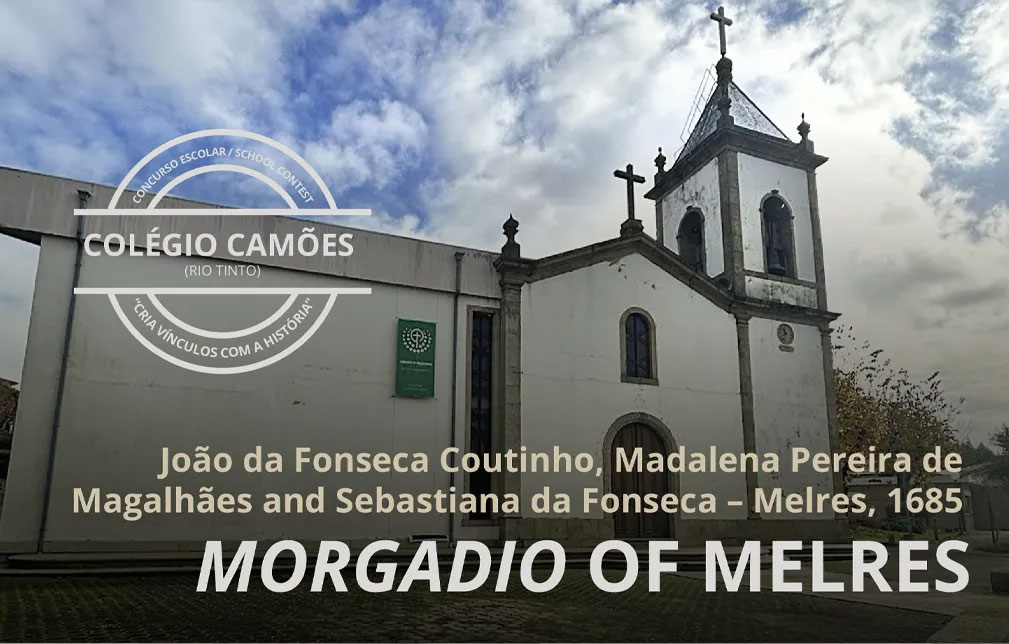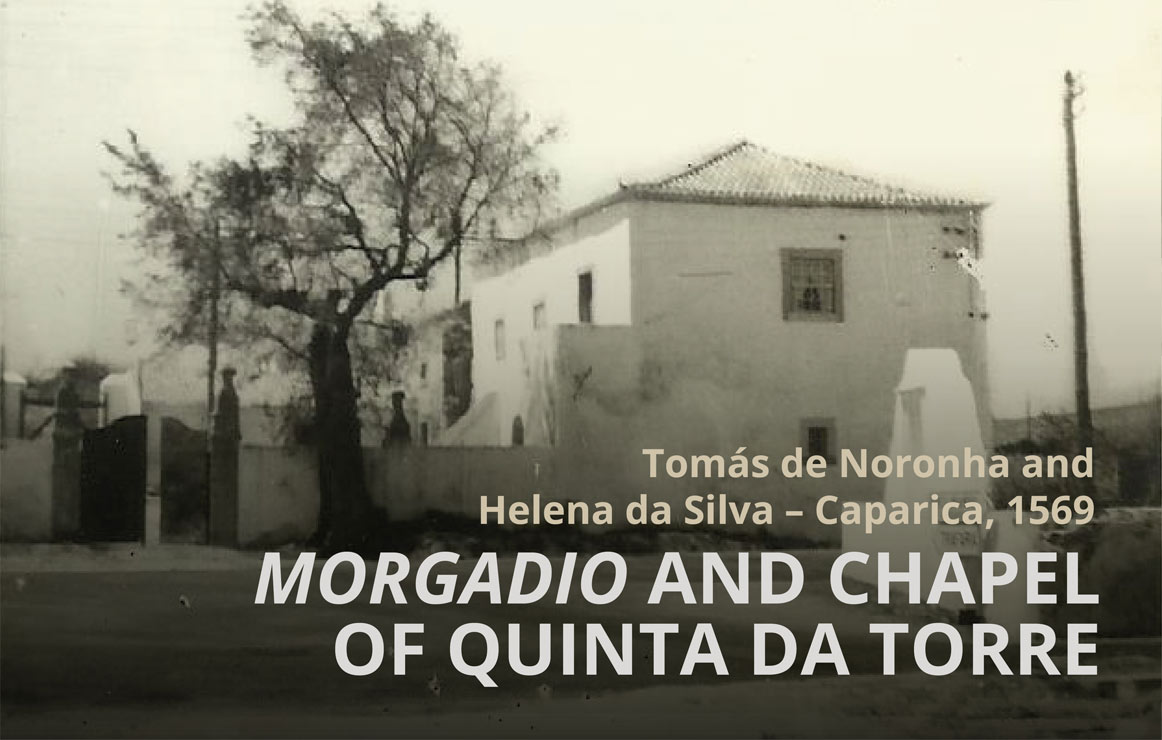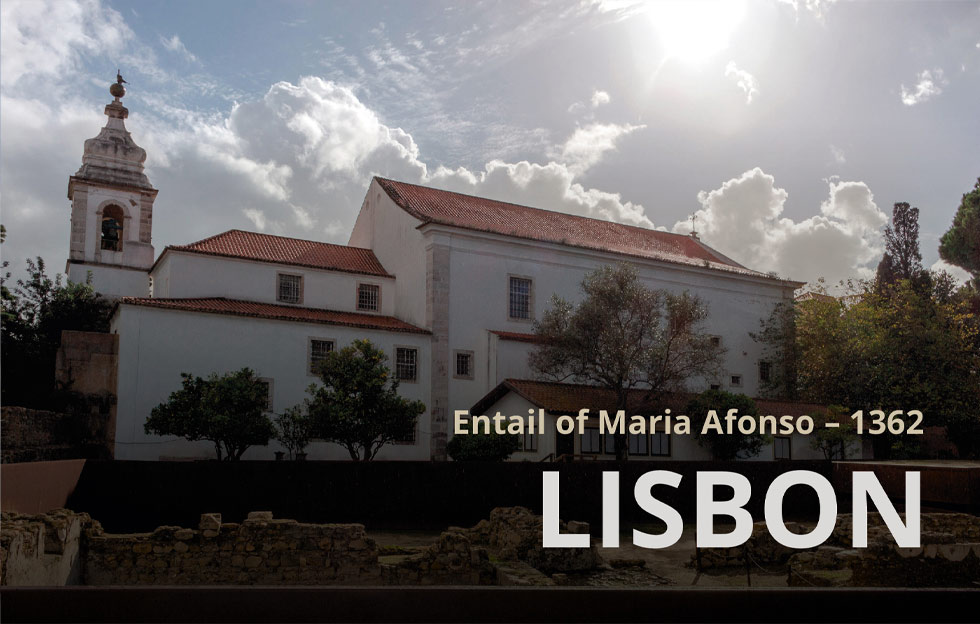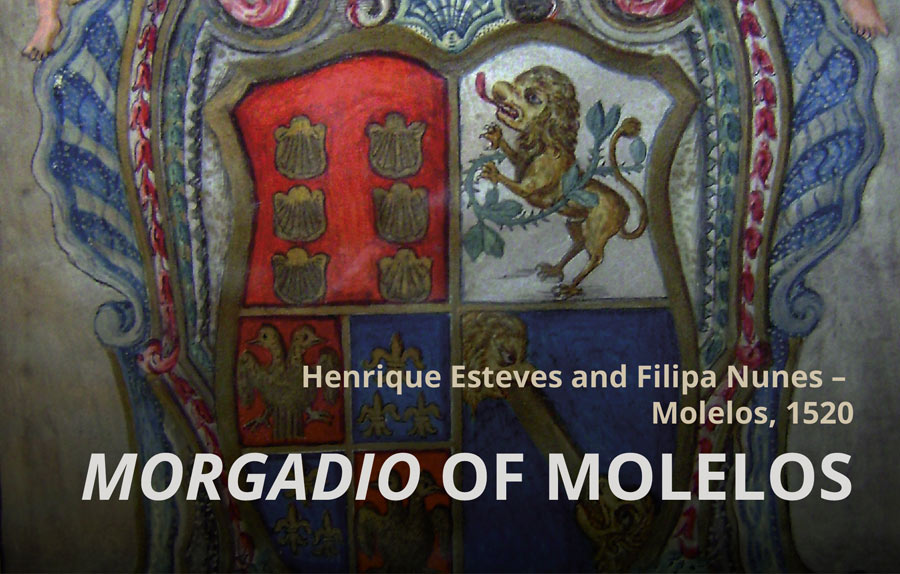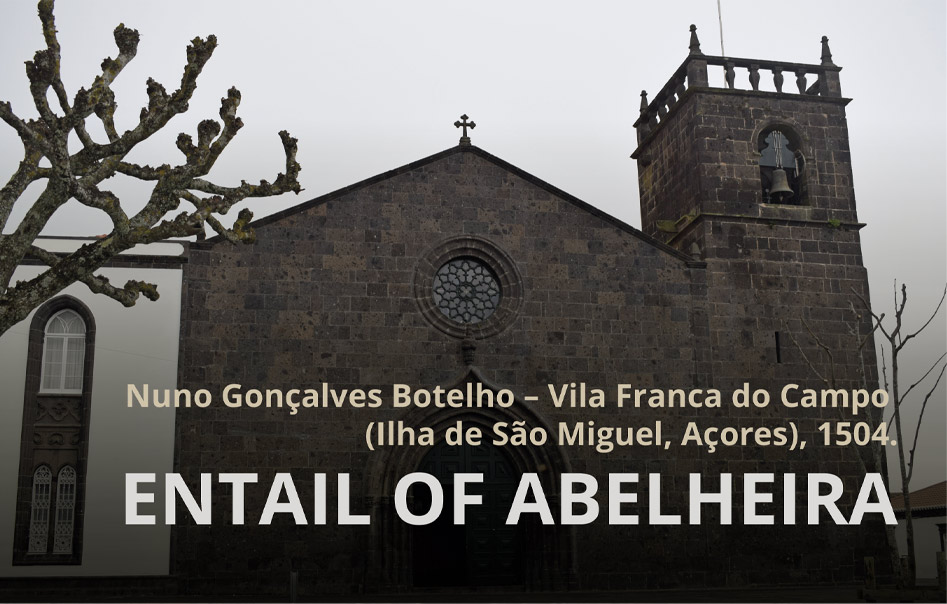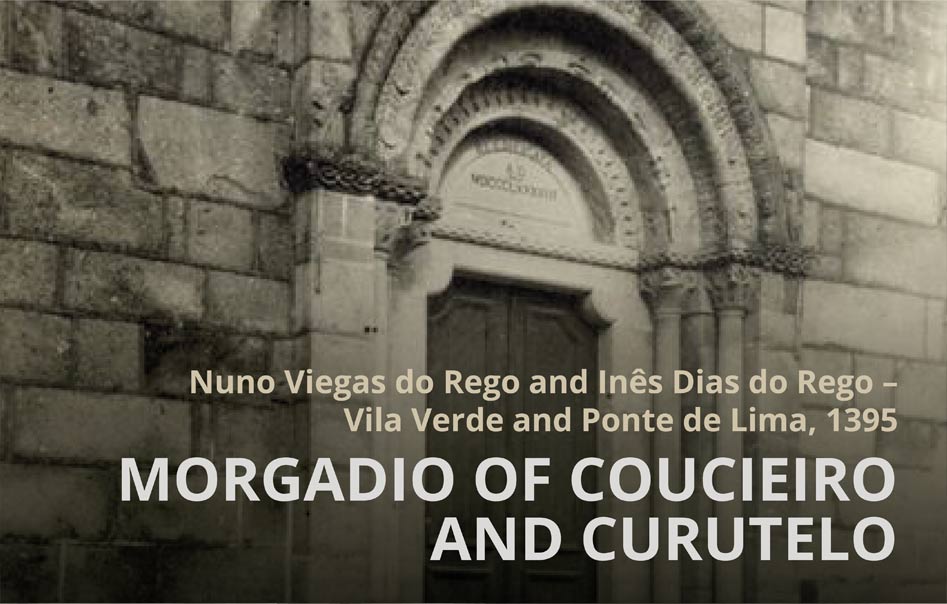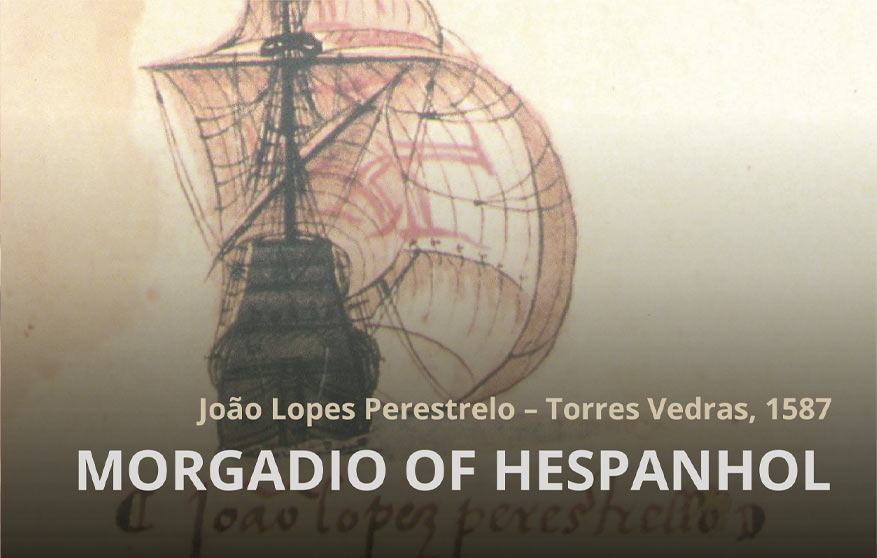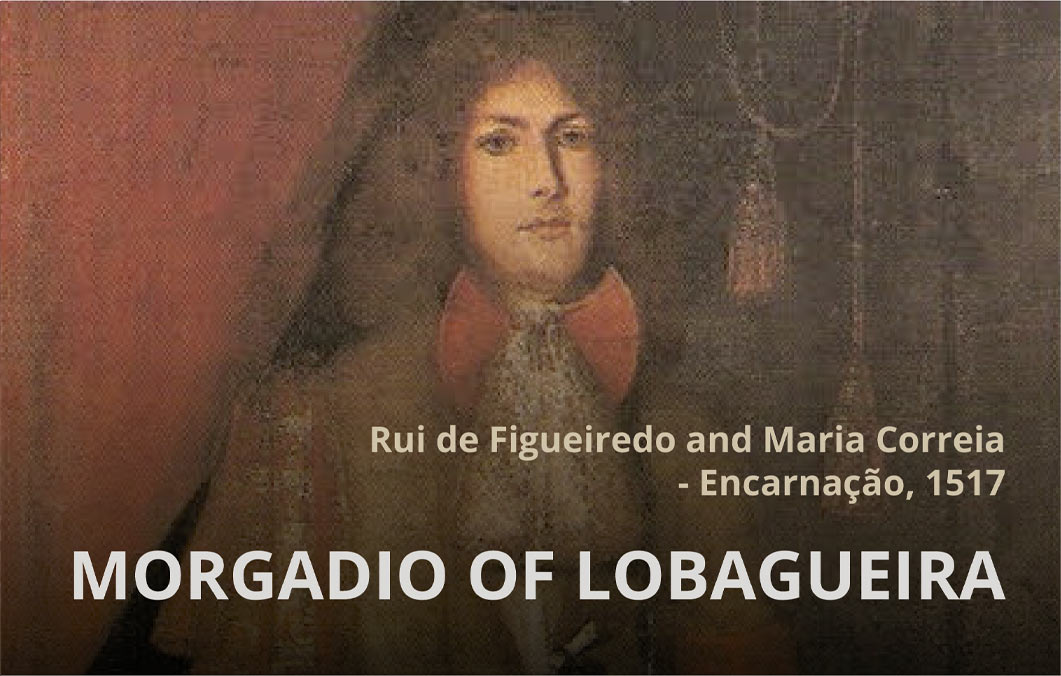Entail of the month (April, 2022)
Morgadio of D. Álvaro da Costa
Lisbon, 1603
Born in 1527, Álvaro da Costa was a long-awaited first-born son in a family whose prominence at the royal courts of kings Manuel and João III owed much to the personal skills of its members. Prominence began with Álvaro’s namesake and grandfather, who was king Manuel’s loyal servant. Álvaro da Costa Senior’s eldest son, Gil Eanes, continued his father’s brilliant career. He built upon inherited wealth thanks to able management and political ability. His first marriage “in fortune” (to Maria, daughter of a wealthy merchant named João do Outeiro) was cut short by his wife’s death. He then married Joana da Silva (?-1561), becoming tied to a noble family whose power at court was effectual.
The hopes placed on Álvaro were expressed in the name which he was given, and had existed even before he was born. They were important for the family’s social affirmation at the time, that is to perpetuate, consolidate and improve the social trajectory initiated by his paternal grandfather and continued by his father.
Álvaro’s childhood was carefree and happy, as befitted the court nobility. However, around the age of six an accident forever changed his life (APVF, Livro do Morgadio de D. Álvaro da Costa da Silva, Título da Família e apelidos dos Costas, fl. 3). While at home, as part of a game, Álvaro and some friends set fire to some gunpowder that his father had put out to dry. The explosion killed two children and injured all other. The fire left significant scarring on Álvaro’s face, chest and hands. Besides the physical suffering, he was forced to bear a stigma at that time, that physical disabilities were a reflection “at the symbolic level … [of] the image of the entire family line” (ROSA, 1988, p. 1059-ss). An even deeper blow was dealt by Álvaro’s parents’ dramatic decision to direct him to an ecclesiastical career. The accident resulted in Álvaro being given the nickname “Queimado” (Scorched), which went down in history and has served to tell apart many other kinsmen also named Álvaro da Costa.
Once he was ordained a priest, Álvaro’s ecclesiastic career reached added significance. He climbed to a position as dean of Guarda Cathedral. His private life, however, was not attuned with the precepts of a religious career. Genealogists have attributed to him a vast offspring. Álvaro did not repudiate his children. In fact, they were acknowledged and protected. Álvaro had destined a rich dowry to his eldest son, but the son and his wife died early. Álvaro returned to the matter on his deathbed, assigning the dowry to another son, António (APVF, Cédula de Instituição de Morgadio e Capela…, fls. 1-1v). The year 1603 was drawing to a close, and at 76 years of age Álvaro da Costa certainly felt his health failing. He wanted to ensure the provisions necessary for the peace of his soul. He established provisions for the proper use of his property, crowning a strategy developed throughout his life, according to the religious principles which he professed. The entail’s foundation document is an impressive record and deserves analysing.
A system to control the linked assets can be identified in about thirty clauses in the foundation document. This was to guarantee their security ad aeternum. Observing “examples from each day”, the founders mention that “houses that had been wealthy once suffered major setbacks” owing to weak administration, “consuming what their ancestors laboriously had put together, thus laying their legacy waste” (id., liv. 21, fol. 187). In this sense, it was required that an iron chest be placed in the Carmo Convent, containing the terças and legítimas of the entail (ibid., fol. 188) — having three keys, split between the administrator, the prior of the convent, and a judge (ibid., fol. 191v). Future administrators were obliged to write an inventory of the goods and report to the Provedor das Capelas in Lisbon (ibid., fol. 192v). Disputes were to be taken before the court of Mesa da Consciência e Ordens, the assets being immediately seized, and the case handed over to the younger judge, deemed less susceptible to corruption (ibid., fl. 192).
This strategy produced extensive documentation, including the register of the chapel’s accounts, with over 200 years of suffrage prayers noted (ANTT, Hospital de São José, escrivão Botelho, mç. 38, nr 1, cx. 594) and the properties inventories. Today, they are very useful to research on this entail (ANTT, Feitos Findos, Juízo dos Órfãos de Lisboa, mç. 107, nr 7).
The foundation deed decreed that “to this said morgadio and morgadios shall not succeed a natural or spurious son or daughter, nor the descendants of friars and nuns, nor any religious people (…) expect for (…) António de Barona” (ANTT, Chancelaria de D. Filipe III, liv. 21, fol. 180v). However, António’s status as a member of the clergy gave rise to a complex legal process. António Serrão, “an official in the cabinet of Pedro Lamirantes, clerk of the Crown”, said publicly and “with the greatest scandal and outcry” (ibid., fol. 196v) that he would denounce the morgadio, mentioned above, for a churchman had been called to administer it. The dispute comes out as quite extraordinary. The founders were threatened and feared that the entail would be considered vacant after their death, its administration going to whoever claimed it before the Juízo das Capelas. The founders believed the issue to be one of “future rights” – the Crown prosecutor, Tomé Pinheiro da Veiga, regarding it as “imaginary” and “extraordinary” (ibid., fol. 197). As such, it was intended to demand the complainant immediately. In addition to António Serrão withdrawing, “because he understood that he had no action against them, either now or in the future” (ibid.), the legal decrees unanimously considered that it would be enough for the king to confirm the institution and to have all the documents produced transferred to the royal chancellery, which happened in 1630, since “there was nothing in it that offended my [the king’s] laws” (ibid.).
According to the conceptions of the age, every earthly good belonged to God. God shared those goods with humankind at will, favouring the noblest and most important individuals. The foundation document stated the custom of these individuals binding such goods in the shape of entails. The document goes on to clarify that all of Álvaro’s property was held freely (APVF, Inventário orfanológico D. António da Costa, fl. 16; ANTT, Hospital de S. José, lv. 83, fl. 84) given his clerical status, and the main reasons for doing so are listed: “desiring to perpetuate my memory ” (APVF, Cédula de Instituição de Morgadio e Capela…, fl. 1v), so that the successors could serve the king, to help those most in need, especially those “of the bloodline and surname of Costa”, and to recommend his soul to God (ibid.). Álvaro thus instituted a chapel for the celebration of daily mass, assigning its administration to the heir of the entail.
The text then deals in detail with the “rules of personal conduct and lineage” (ROSA, 1995, p. 218) which the entail administrator should obey. Generally, the requirements concerning the figure of the heir and succession do not deviate from the standard found among the most complete institutions known. This had become stable in the early seventeenth century. However, one of the most thought-provoking clauses adds a certain “warmth” to the document, humanising its legal coldness. Álvaro da Costa, cut off from representing the family because of a childhood accident, had felt the cruelty of what he saw as an injustice. He had dedicated a significant part of his life to proving that he was capable of performing great deeds. At his death, his ancestors’ mistake would be forever repaired, seeing that he guaranteed that his descendants would enjoy something which he never had in full. An exemplary clause, integrating the general provisions, stipulated that if a successor were born blind, mute, “crippled”, insane (“sandeu”) or unable to have children, the estate should pass down to the next person in the order of succession. Álvaro had an addendum included, which is key to understanding his feelings about the consequences of his fateful accident: if the disability occurred after birth – as had been his own case, as we have seen – this alone did not lead to exclusion from inheriting, except if the disabilities were “of a kind depriving [the person] of their intellect” (APVF, Cédula de Instituição de Morgadio e Capela…, fl. 5v). In that case, if the disabled candidate did not have enough means, the next administrator was obliged to support them at the expense of the estate’s income, although that could never exceed half of the total annual revenue (ibid.).
Let us finish analysing this impressive text by referring to a final provision. This is even more exemplary of the central issue which consisted of the family’s representation. Álvaro’s suffering throughout life, as he was kept from completely representing the family he had been born into, was given response. Álvaro da Costa, “o Queimado “, asserted before society his willingness to embrace the role of representing the family: he left to his descendants something that he never could enjoy, by imposing on the successors to the estate the obligation to use the family symbols.
Margarida Leme and Maria de Lurdes Rosa (based on Pedro Villa Franca, “D. Álvaro da Costa da Silva (1527-1604?), o primogénito proscrito” in D. Álvaro da Costa e a sua descendência, séculos XV-XVII: poder, arte e devoção, coord. Maria de Lurdes Rosa, Lisbon: IEM, CHAM, Caminhos Romanos, 2013, pp. 119-154
Coordination: Rita Sampaio da Nóvoa, Joana Soares, Maria Beatriz Merêncio
Sources and bibliography
ARQUIVO NACIONAL TORRE DO TOMBO — Hospital de S. José, lv. 83, fl. 84.
ARQUIVO PEDRO VILLA FRANCA — Livro do Morgadio de D. Álvaro da Costa da Silva, Título da Família e apelidos dos Costas.
— Cédula de Instituição de Morgadio e Capela, fls. 1-5v.
ROSA, Maria de Lurdes — “Imagem física, saúde mental e representação familiar: A exclusão dos deficientes à sucessão de morgadio (instituições, legislação, literatura jurídica)”, in Arqueologia do Estado. I Jornadas sobre Formas de Organização e Exercício dos Poderes na Europa do Sul, Séculos XIII-XVIII, Lisbon: História e Crítica, 1988, vol. 2, pp. 1059-1097
ROSA, Maria de Lurdes — O Morgadio em Portugal. Sécs. XIV-XV, Lisbon: Editorial Estampa, 1995
Other entails of the month



